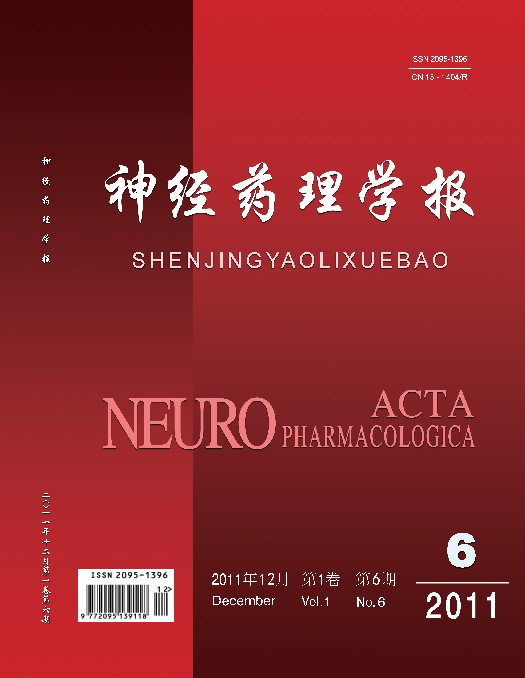|
|
Effects of Silibinin on Depression-like and Anxiety-like Behaviors Induced by Sodium Butyrate in Aged Mice
ZHANG Yan, WANG Jia-xing, LIU Na, BU Yu-jie, BAO Jin-feng
2011, 1 (6):
17-21.
Objective: To explore the behavioral dysfunctions induced by sodium butyrate in aged mice and the prophylactic effects of silibinin. Methods: Eight-month-old kunming mice were randomly divided into control group, sodium butyrate group and sodium butyrate plus Silibinin (0.1, 0.2 g·kg-1) group. The behaviors of aged mice were examined via the tail suspension test, open field test, elevated plus maze test and light/dark box test. Results: In the tail suspension test,the immobility time of sodium butyrate group was significantly increased compared with control group (P<0.05), while silibinin significantly antagonized the increase in immobility time induced by solidum butyrate (P<0.05). In the open-field test, the total travel distance was significantly decreased in solidum butyrate group as compared with control group (P<0.05) and silibinin treatment reversed such a decrease. In the elevated plus maze test, time spent in closed arms after sodium butyrate treatment in mice was significantly increased as compared with the control group (P<0.05), and there was a trend that silibinin blocked such an increase but failed to reach statistical significance.In light/dark box test, the residence time in the light box for the mice in sodium butyrate group was significantly decreased than for those in control group (P<0.05). Silibinin (0.2 g·kg-1) treated mice exhibited a significantly increased residence time of the light box compared with sodium butyrate group (P<0.05). Conclusion: Sodium butyrate can induce depression-like and anxiety-like behaviors. Silibinin can relieve those behavioral changes induced by sodium butyrate.
References |
Related Articles |
Metrics
|

